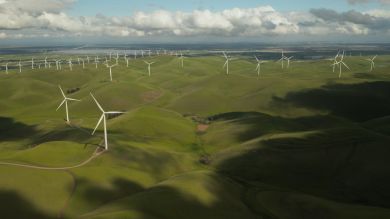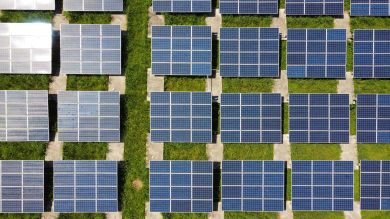Lighting and Sustainability

Electricity is, as we know, an irrevocable invention with gigantic effects on society to this day. In terms of Enlightenment, this monumental innovation allowed human civilization to see at night - something we were not originally able to do. However, naturally, this innovation, however productive and important it may be, has a cost and effects on our planet. Come and discover more about Lighting and Sustainability.
While lighting is vital in our daily lives, it is important to consider the impacts that excessive energy use has from an ecological point of view. It is necessary to properly conserve electricity, whether through proper maintenance or technological advances. This will not only be beneficial for the environment and future generations, but can also mean significant savings for home and business owners.
Over the last few decades, there have been many improvements, such as the invention of LED technology, which has resulted in radical energy savings all over the world. In fact, we need to start using our resources more efficiently. It is estimated that by 2030 the total count of points of light globally will increase by 35% to 60 billion. Simply selecting LED technology over incandescent lighting would mean a 53% reduction in energy consumption.
Philips, an internationally renowned brand and Tromilux partner, has created 8 sustainable areas that it currently focuses on:
Energy
Products and systems that consume 10% less energy.
Substances
Eliminated harmful substances from products to reduce environmental and health risks.
Circularity
Products designed for a circular economy (disassembly, reuse, extended life) to reduce waste and waste.
Human centered lighting
Lighting that enhances people's well-being and performance, to help them see, feel and function better.
Weights and materials
Reduce product weight and select sustainable materials.
Basic needs
Provide lighting to help grow more food and provide more clean water for a growing population.
Packaging
Reduce packaging weight and volume, increase recycled content.
Access to light
Provides light in off-grid and poorly maintained areas.
This and more information is available on the brand's website.
In the next article we will give you some tips to have more sustainable lighting in your home. You won't want to miss it!
While lighting is vital in our daily lives, it is important to consider the impacts that excessive energy use has from an ecological point of view. It is necessary to properly conserve electricity, whether through proper maintenance or technological advances. This will not only be beneficial for the environment and future generations, but can also mean significant savings for home and business owners.
Over the last few decades, there have been many improvements, such as the invention of LED technology, which has resulted in radical energy savings all over the world. In fact, we need to start using our resources more efficiently. It is estimated that by 2030 the total count of points of light globally will increase by 35% to 60 billion. Simply selecting LED technology over incandescent lighting would mean a 53% reduction in energy consumption.
Philips, an internationally renowned brand and Tromilux partner, has created 8 sustainable areas that it currently focuses on:
Energy
Products and systems that consume 10% less energy.
Substances
Eliminated harmful substances from products to reduce environmental and health risks.
Circularity
Products designed for a circular economy (disassembly, reuse, extended life) to reduce waste and waste.
Human centered lighting
Lighting that enhances people's well-being and performance, to help them see, feel and function better.
Weights and materials
Reduce product weight and select sustainable materials.
Basic needs
Provide lighting to help grow more food and provide more clean water for a growing population.
Packaging
Reduce packaging weight and volume, increase recycled content.
Access to light
Provides light in off-grid and poorly maintained areas.
This and more information is available on the brand's website.
In the next article we will give you some tips to have more sustainable lighting in your home. You won't want to miss it!
